Risk of Poisoning from Garden Plants: Misidentification between Laurel and Cherry Laurel
Abstract
:1. Introduction
2. Results
2.1. Macro- and Micro-Morphological Analyses
2.2. Phytochemical Analysis
3. Discussion
4. Conclusions
5. Materials and Methods
5.1. Plant Material
5.2. Chemicals
5.3. Light Microscopy (LM)
5.4. Scanning Electron Microscopy (SEM)
5.5. Phytochemical Analyses
5.5.1. Sample Preparation
5.5.2. Determination of Total Cyanogenetic Glycosides by Colorimetric Assays
Picric Acid Method
Pyridine-Barbituric Acid Method
Determination of the Toxic Phytochemical Marker Prunasin by HPLC-DAD Analysis
Supplementary Materials
Author Contributions
Funding
Institutional Review Board Statement
Informed Consent Statement
Data Availability Statement
Acknowledgments
Conflicts of Interest
References
- Mezzasalma, V.; Ganopoulos, I.; Galimberti, A.; Cornara, L.; Ferri, E.; Labra, M. Poisonous or non-poisonous plants? DNA-based tools and applications for accurate identification. Int. J. Legal Med. 2017, 131, 1–19. [Google Scholar] [CrossRef] [PubMed]
- Cortinovis, C.; Caloni, F. Plants Toxic to Farm and Companion Animals. In Plant Toxins; Carlini, C., Ligabue-Braun, R., Eds.; Springer: Dordrecht, The Netherlands, 2017; pp. 107–134. [Google Scholar]
- Colombo, M.L.; Assisi, F.; Della Puppa, T.; Moro, P.; Sesana, F.M.; Bissoli, M.; Borghini, R.; Perego, S.; Galasso, G.; Banfi, E.; et al. Most commonly plant exposures and intoxications from outdoor toxic plants. J. Pharm. Sci. Res. 2010, 2, 417–425. [Google Scholar]
- Cornara, L.; Smeriglio, A.; Frigerio, J.; Labra, M.; Di Cristina, E.; Denaro, M.; Mora, E.; Trombetta, D. The problem of misidentification between edible and poisonous wild plants: Reports from the Mediterranean area. Food Chem. Toxicol. 2018, 119, 112–121. [Google Scholar] [CrossRef] [PubMed]
- Ichim, M.C.; Haser, A.; Nick, P. Microscopic Authentication of Commercial Herbal Products in the Globalized Market: Potential and Limitations. Front. Pharmacol. 2020, 11, 876. [Google Scholar] [CrossRef] [PubMed]
- Joshi, V.C.; Srinivas, P.V.; Khan, I.A. Rapid and Easy Identification of Illicium verum Hook. f. and Its Adulterant Illicium anisatum Linn. by Fluorescent Microscopy and Gas Chromatography. J. AOAC Int. 2005, 88, 703–706. [Google Scholar] [CrossRef] [PubMed]
- Moro, P.A.; Assisi, F.; Cassetti, F.; Bissoli, M.; Borghini, R.; Davanzo, F.; Della Puppa, T.; Dimasi, V.; Ferruzzi, M.; Giarratana, C.; et al. Toxicological hazards of natural environments: Clinical reports from Poison Control Centre of Milan. Urban For. Urban Green. 2009, 8, 179–186. [Google Scholar] [CrossRef]
- Schmidt, B.; Goerigk, D.; Locher, L.; Jager, K.; Bachmann, L.; Coenen, M. Cyanide toxicosis in goats after the ingestion of improperly stored green waste from cherry laurel (Prunus laurocerasus L.)—A case report. Prakt. Tierarzt 2013, 94, 722–731. [Google Scholar]
- Alamgir, A.N.M. Microscopy in Pharmacognosy. In Therapeutic Use of Medicinal Plants and Their Extracts; Rainsford, K.D., Ed.; Springer: Berlin/Heidelberg, Germany, 2017; Volume I, pp. 497–513. [Google Scholar]
- Galvin-King, P.; Haughey, S.A.; Elliott, C.T. Herb and spice fraud; the drivers, challenges and detection. Food Control 2018, 88, 85–97. [Google Scholar] [CrossRef] [Green Version]
- Raman, V.; Bussmann, R.W.; Khan, I.A. Which Bay Leaf is in Your Spice Rack?—A Quality Control Study. Planta Med. 2017, 83, 1058–1067. [Google Scholar] [CrossRef] [Green Version]
- Demirbolat, I.; Kartal, M. Prulaurasin content of leaves, kernels and pulps of Prunus lauracerasus L. (Cherry Laurel) during ripening. J. Res. Pharm. 2019, 22, 69–75. [Google Scholar] [CrossRef] [Green Version]
- Dobroslavić, E.; Repajić, M.; Dragović-Uzelac, V.; Elez Garofulić, I. Isolation of Laurus nobilis leaf polyphenols: A review on current techniques and future perspectives. Foods 2022, 11, 235. [Google Scholar] [CrossRef] [PubMed]
- Appenteng, M.K.; Krueger, R.; Johnson, M.C.; Ingold, H.; Bell, R.; Thomas, A.L.; Greenlief, C.M. Cyanogenic Glycoside Analysis in American Elderberry. Molecules 2021, 26, 1384. [Google Scholar] [CrossRef] [PubMed]
- Kobaisy, M.; Oomah, B.D.; Mazza, G. Determination of Cyanogenic Glycosides in Flaxseed by Barbituric Acid−Pyridine, Pyridine−Pyrazolone, and High-Performance Liquid Chromatography Methods. J. Agric. Food Chem. 1996, 44, 3178–3181. [Google Scholar] [CrossRef]
- Boulila, A.; Hassen, I.; Haouari, L.; Mejri, F.; Amor, I.B.; Casabianca, H.; Hosni, K. Enzyme-assisted extraction of bioactive compounds from bay leaves (Laurus nobilis L.). Ind. Crops Prod. 2015, 74, 485–493. [Google Scholar] [CrossRef]
- Cortini, E.; Chiara, F.; Petrolini, V.M.; Vecchio, S.; Giampreti, A.; Locatelli, C.A. When folk medicine harms: Four pediatric cases following ingestion of Laurus nobilis infusion. Clin. Toxicol. 2014, 52, 389. [Google Scholar]
- Banfi, E.; Colombo, M.L.; Davanzo, F.; Falciola, C.; Galasso, G.; Martino, E.; Perego, S. Piante velenose della flora italiana nell’esperienza del Centro Antiveleni di Milano. Natura 2012, 102, 3–184. [Google Scholar]
- Settimi, L.; Davanzo, F.; Cossa, L.; Giordano, F.; Giarletta, A.M.; Urbani, E. Sistema Informativo Nazionale per la Sorveglianza delle Esposizioni Pericolose e delle Intossicazioni: Casi Rilevati nel 2013—Ottavo Rapporto Annual; Rapporti ISTISAN 17/22; Istituto Superiore di Sanità: Roma, Italy, 2017. [Google Scholar]
- EMEA. Prunus Laurocerasus—Summary Report. 1999. Available online: https://www.ema.europa.eu/en/documents/mrl-report/prunus-laurocerasus-summary-report-committee-veterinary-medicinal-products_en.pdf (accessed on 22 October 2022).
- Wink, M.; Van Wyk, B.E. Mind-Altering and Poisonous Plants of the World; Timber Press: Portland, OR, USA, 2008; pp. 1–464. [Google Scholar]
- Settimi, L.; Davanzo, F.; Bacis, G.; Cossa, L.; Moretti, S. Sistema Informativo Nazionale per la Sorveglianza delle Esposizioni Pericolose e delle Intossicazioni: Casi Rilevati nel 2015—Decimo Rapporto Annual; Rapporti ISTISAN 19/20; Istituto Superiore di Sanità: Roma, Italy, 2019. [Google Scholar]
- Kennedy, A.; Brennan, A.; Mannion, C.; Sheehan, M. Suspected cyanide toxicity in cattle associated with ingestion of laurel—A case report. Ir. Vet. J. 2021, 74, 6. [Google Scholar] [CrossRef]
- Gensa, U. Review on Cyanide Poisoning in Ruminants. J. Biol. Agric. Healthc. 2019, 9, 1–12. [Google Scholar] [CrossRef]
- Caloni, F.; Cortinovis, C.; Rivolta, M.; Alonge, S.; Davanzo, F. Plant poisoning in domestic animals: Epidemiological data from an Italian survey (2000–2011). Vet. Rec. 2013, 172, 580. [Google Scholar] [CrossRef]
- Wilson, D.R.; Gordon, W.S. Laurel poisoning in sheep. Vet. Rec. 1941, 53, 95–97. [Google Scholar]
- Moll, J.W.; Janssonius, H.H. Botanical Pen-Portraits, 1st ed.; Springer: Dordrecht, The Netherlands, 1923; pp. 59–457. [Google Scholar]
- Rao, P.P.; Reddy, J.; Gupta, H.C. Pharmacognosy of Prunus laurocerasus Linn—A homoeopathic Drug. Indian J. Res. Homoeopath. 2008, 2, 6–9. [Google Scholar]
- Barroso, W.A.; Gondim, R.S.D.; Marques, V.B.; Lael, M.M.; Santos, P.F.; Castro, A.T.O.; Filho, F.F.S.; de Sousa Melo, D.N.; Vilanova, C.M. Pharmacognostic Characterization of Laurus nobilis L. Leaves. J. Chem. Pharm. Res. 2017, 10, 30–37. [Google Scholar]
- Chmit, M.S.; Kanaan, H.M.; Agha, I.H. Contribution to microscopic study of Laurus nobilis L. widespread in Syria. Eur. J. Pharm. Med. Res. 2018, 5, 580–586. [Google Scholar]
- Blonder, B.; Salinas, N.; Bentley, L.P.; Shenkin, A.; Porroa, P.O.C.; Tejeira, Y.V.; Espinoza, T.E.B.; Goldsmith, G.R.; Enrico, L.; Martin, R.; et al. Structural and defensive roles of angiosperm leaf venation network reticulation across an Andes-Amazon elevation gradient. J. Ecol. 2018, 106, 1683–1699. [Google Scholar] [CrossRef] [Green Version]
- Pautov, A.; Bauer, S.; Ivanova, O.; Krylova, E.; Yakovleva, O.; Sapach, Y.; Pautova, I. Influence of stomatal ring on movements of guard cells. Tree 2019, 33, 1459–1474. [Google Scholar] [CrossRef]
- Boldt, K.M.; Rank, B. Stomata dimorphism in dicotyledonous plants of temperate climate. Feddes Repert 2010, 121, 167–183. [Google Scholar] [CrossRef]
- Hajyzadeh, M.; Cavusoglu, A.; Sulusogl, M.; Unver, T. DNA SSR fingerprinting analysis among cherry laurel (Prunus laurocerasus L.) types. J. Food Agric. Environ. 2013, 11, 630–638. [Google Scholar]
- Caccianiga, M.; Caccia, G.; Mazzarelli, D.; Salsarola, D.; Poppa, P.; Gaudio, D.; Cappella, A.; Franceschetti, L.; Tambuzzi, S.; Maggioni, L.; et al. Common and much less common scenarios in which botany is crucial for forensic pathologist and anthropologists: A series of eight case studies. Int. J. Legal Med. 2021, 135, 1067–1077. [Google Scholar] [CrossRef]
- Pignatti, S.; Guarino, R.; La Rosa, M. Flora d’Italia, 2nd ed.; Edagricole—Edizioni Agricole di New Business Media: Bologna, Italy, 2017–2019; Volume I, p. 100. [Google Scholar]
- Pignatti, S.; Guarino, R.; La Rosa, M. Flora d’Italia, 2nd ed.; Edagricole—Edizioni Agricole di New Business Media: Bologna, Italy, 2017–2019; Volume II, p. 827. [Google Scholar]
- Brundrett, M.C.; Kendrick, B.; Peterson, C.A. Efficient lipid staining in plant material with fluorol yellow 088 in polyethylene glycol-glycerol. Biotech. Histochem. 1991, 66, 111–116. [Google Scholar] [CrossRef]
- Chieco, C.; Rotondi, A.; Morrone, L.; Rapparini, F.; Baraldi, R. An ethanol-based fixation method for anatomical and micro-morphological characterization of leaves of various tree species. Biotech. Histochem. 2013, 88, 109–119. [Google Scholar] [CrossRef]
- ICH Q2(R1). Validation of Analytical Procedures, Definitions and Terminology. In Proceedings of the International Conference on Harmonisation of Technical Requirements for Registration of Pharmaceuticals for Human Use, Geneva, Switzerland, 6 November 1996.
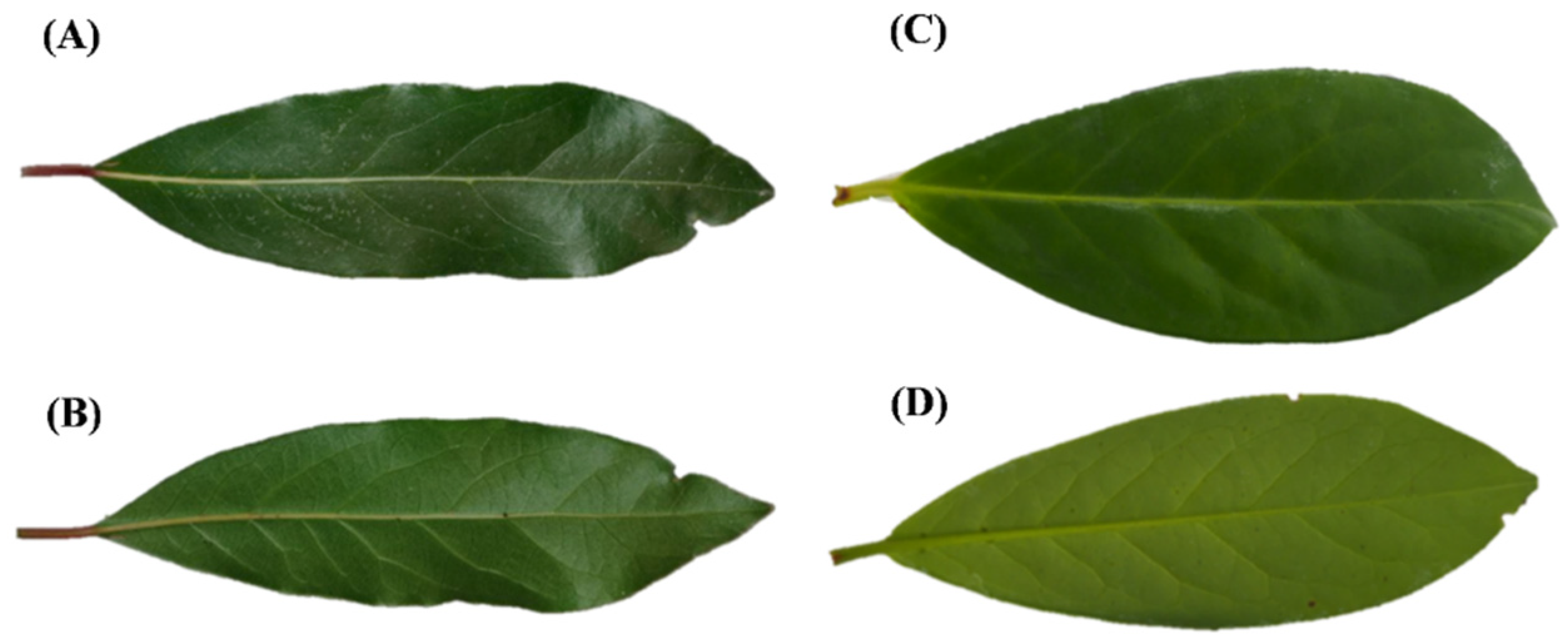

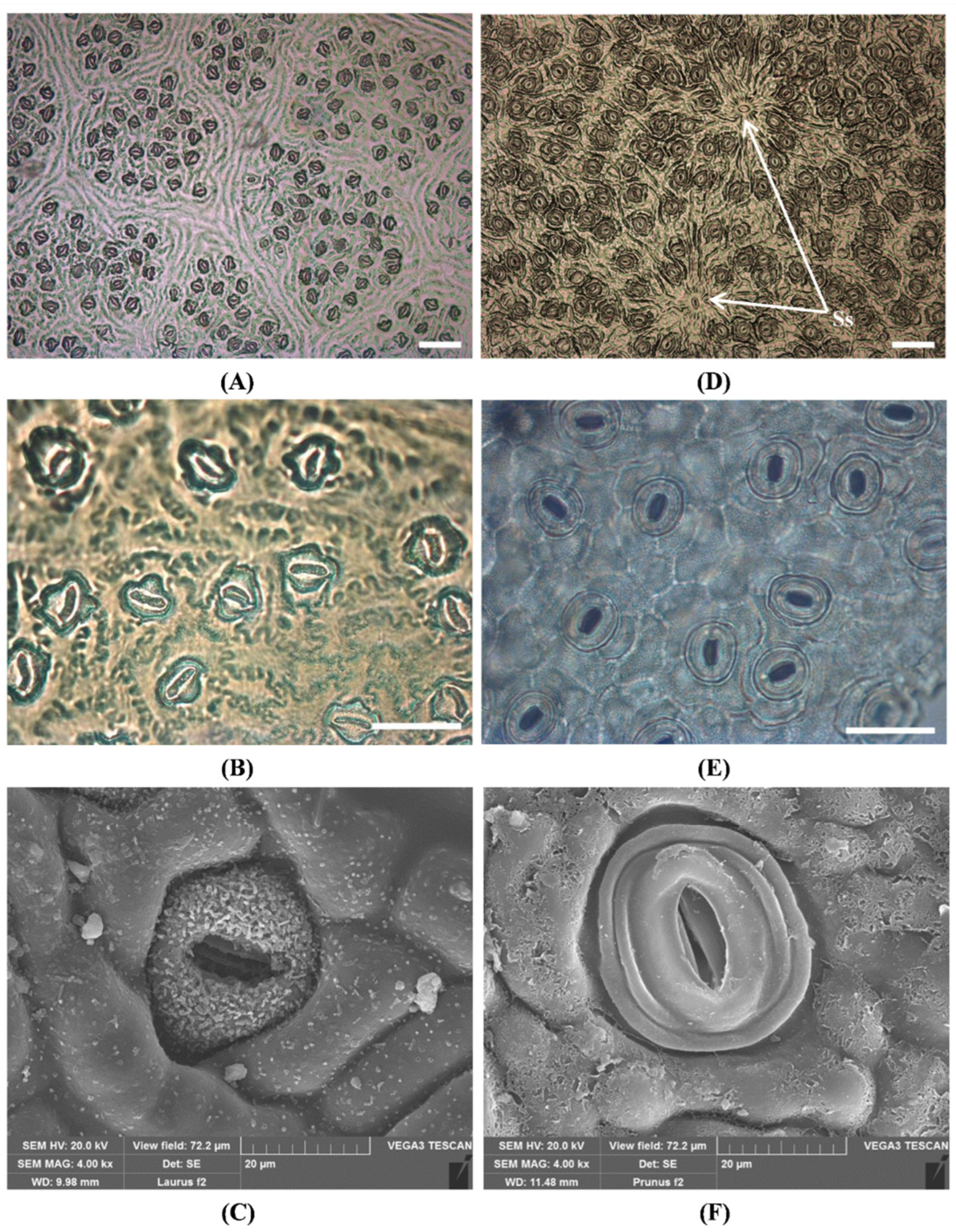


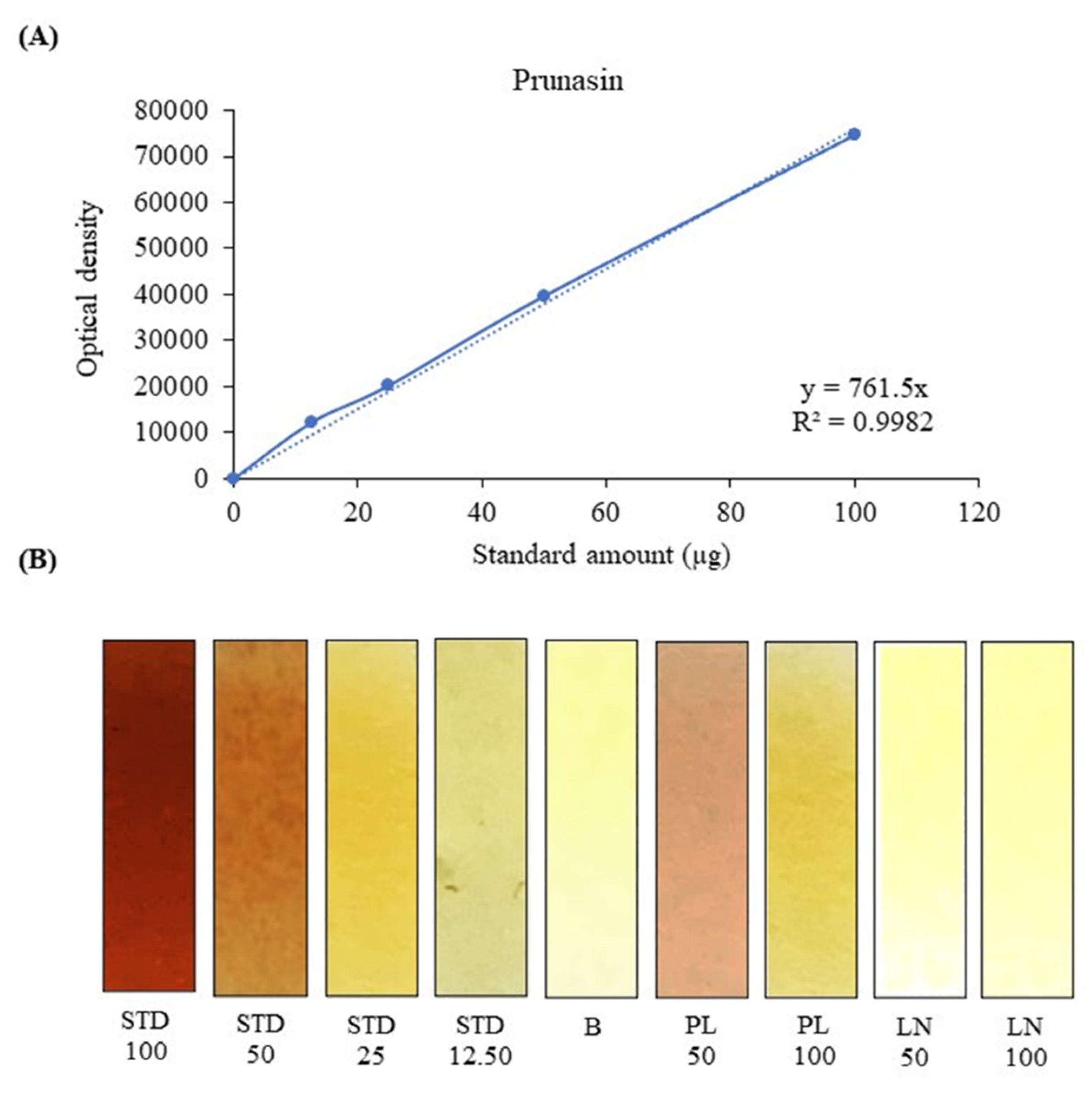
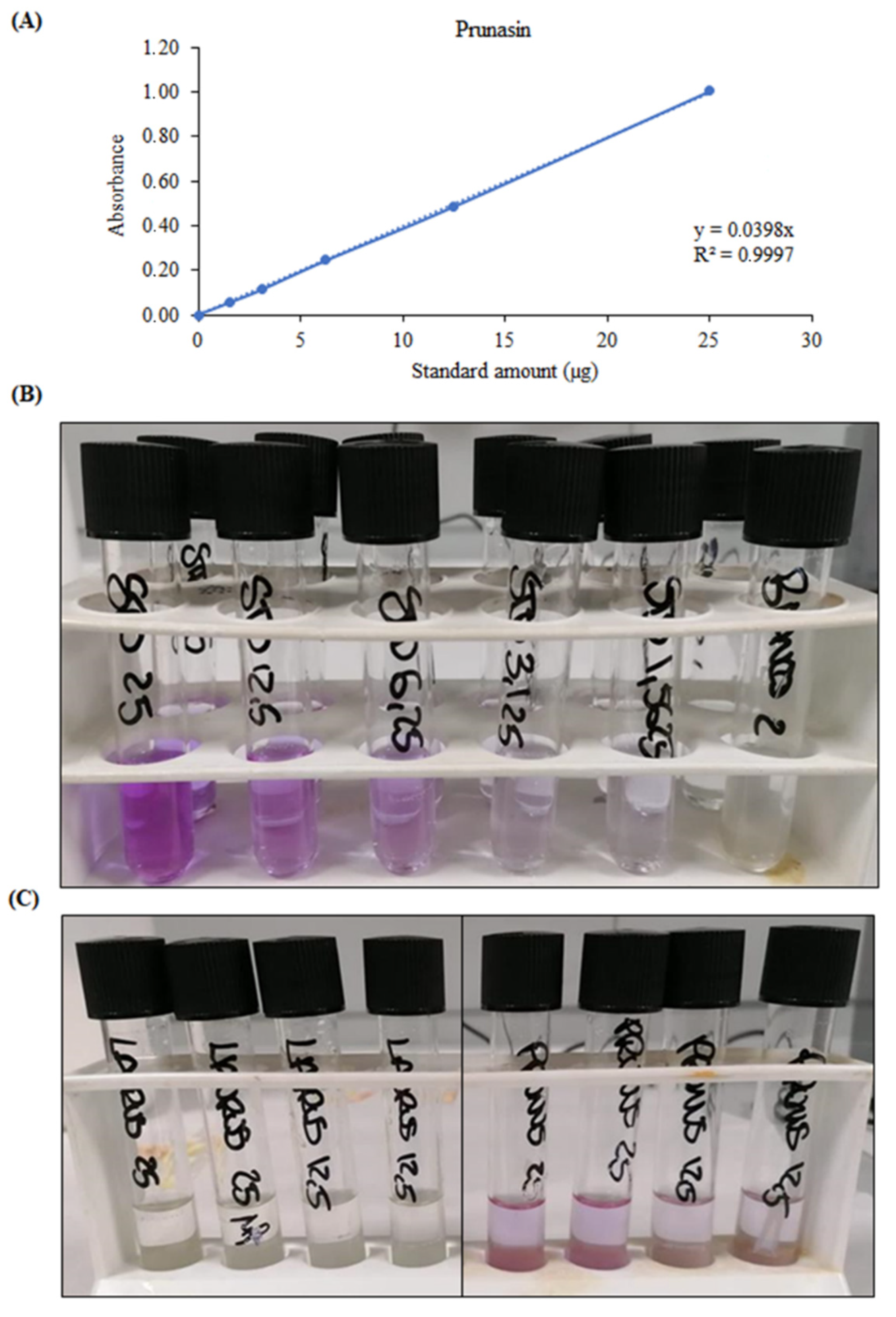
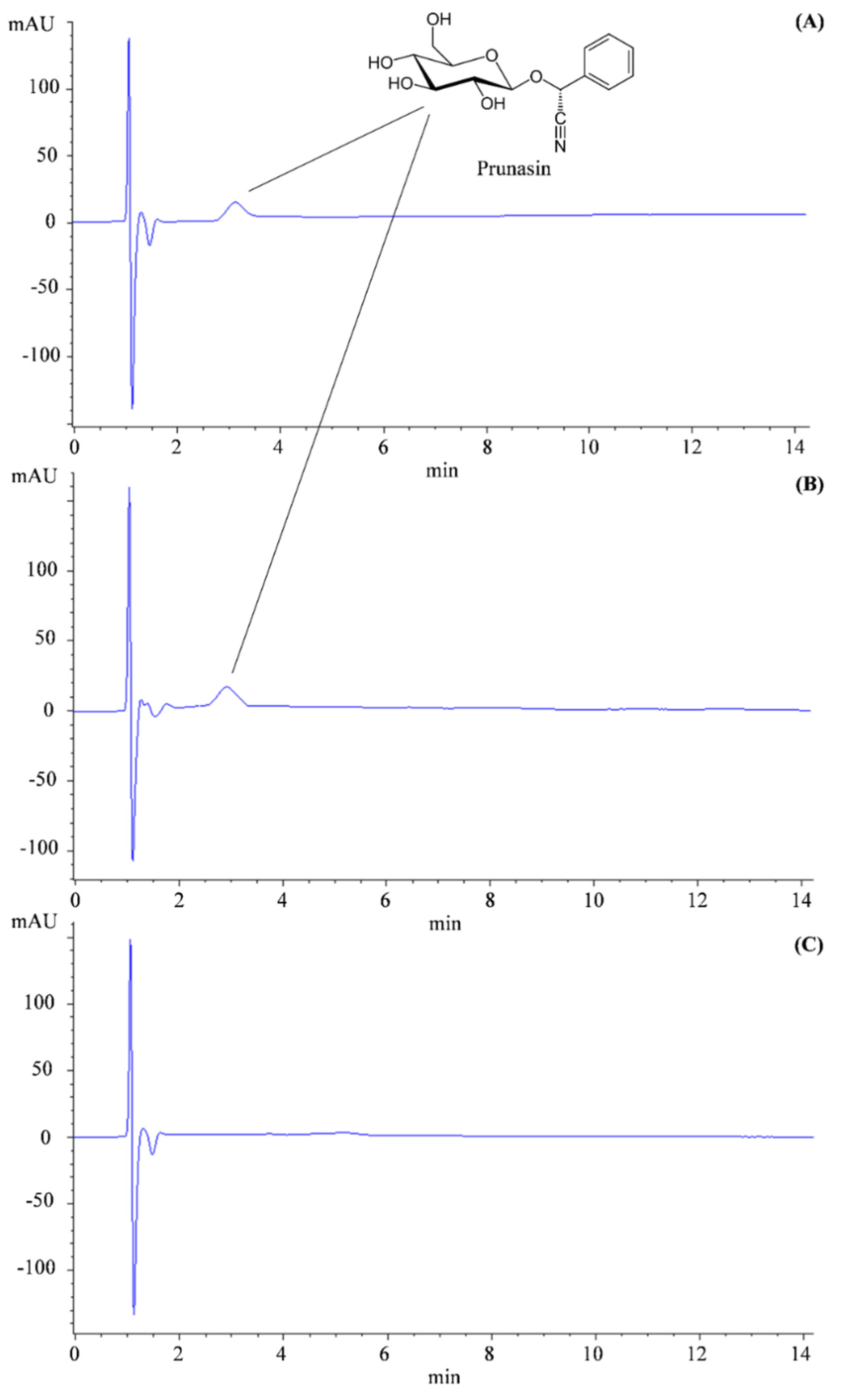
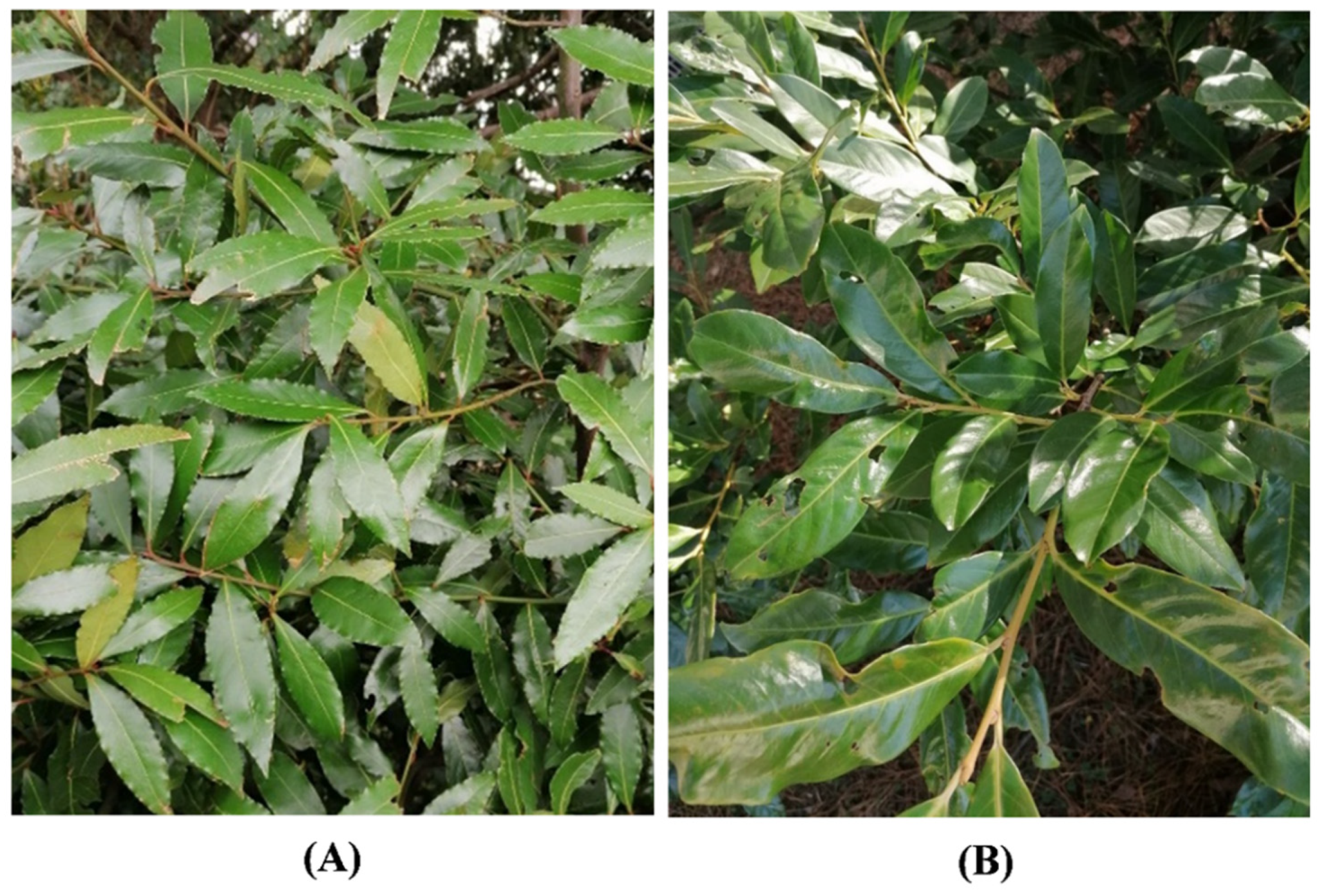
| Validation Parameters | Results |
|---|---|
| Calibration range (µg/mL) | 0.625–40.0 |
| Equation | y = 6.8292x |
| Linearity (R2) | 0.9999 |
| R.S.D. 1 (%), n = 6, within-day | 0.158 |
| R.S.D. (%), n = 6, between-day | 0.187 |
| LOD 2 (ng/mL) | 1.25 |
| LOQ 3 (ng/mL) | 5.0 |
| Recovery (%) | 98.67 |
Publisher’s Note: MDPI stays neutral with regard to jurisdictional claims in published maps and institutional affiliations. |
© 2022 by the authors. Licensee MDPI, Basel, Switzerland. This article is an open access article distributed under the terms and conditions of the Creative Commons Attribution (CC BY) license (https://creativecommons.org/licenses/by/4.0/).
Share and Cite
Malaspina, P.; Betuzzi, F.; Ingegneri, M.; Smeriglio, A.; Cornara, L.; Trombetta, D. Risk of Poisoning from Garden Plants: Misidentification between Laurel and Cherry Laurel. Toxins 2022, 14, 726. https://doi.org/10.3390/toxins14110726
Malaspina P, Betuzzi F, Ingegneri M, Smeriglio A, Cornara L, Trombetta D. Risk of Poisoning from Garden Plants: Misidentification between Laurel and Cherry Laurel. Toxins. 2022; 14(11):726. https://doi.org/10.3390/toxins14110726
Chicago/Turabian StyleMalaspina, Paola, Federica Betuzzi, Mariarosaria Ingegneri, Antonella Smeriglio, Laura Cornara, and Domenico Trombetta. 2022. "Risk of Poisoning from Garden Plants: Misidentification between Laurel and Cherry Laurel" Toxins 14, no. 11: 726. https://doi.org/10.3390/toxins14110726
APA StyleMalaspina, P., Betuzzi, F., Ingegneri, M., Smeriglio, A., Cornara, L., & Trombetta, D. (2022). Risk of Poisoning from Garden Plants: Misidentification between Laurel and Cherry Laurel. Toxins, 14(11), 726. https://doi.org/10.3390/toxins14110726









